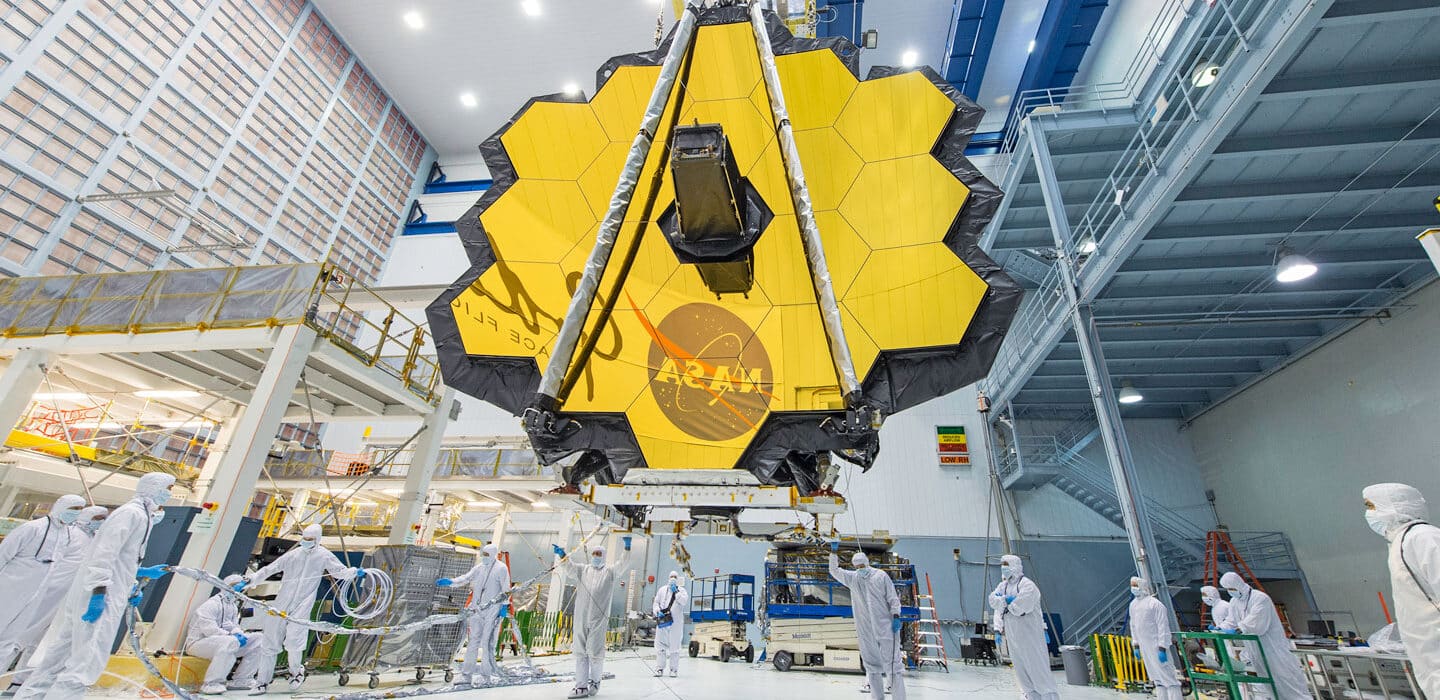Sometimes it does not turn out quite as planned. The James Webb Telescope was initially intended to be launched into space as early as 2011, but due to a series of delays, the launch has been postponed for ten years. Now it’s finally time.

Expectations are sky-high (pun intended!) on Kourou’s European space base in French Guiana. The James Webb Telescope, named after the late former NASA chief, will then take over the mission from the Hubble Telescope, which has served the world’s researchers for over 30 years.
Through the Webb Telescope, observations will be made using infrared light, which will provide many new discoveries. The wavelength we humans can see is called “visible light” and is only a tiny part of the light that exists in the universe. The higher wavelengths, ultraviolet, X-ray, and gamma radiation, and the lower wavelengths; infrared, microwaves, and radio, are invisible to the human eye but contain much information.
Unlike the Hubble Telescope, which made observations in visible light, ultraviolet, and to some extent also in infrared light, the James Webb Telescope will look into space primarily filtered by infrared light. This means that the new telescope can capture light with a longer wavelength than our eyes and the Hubble telescope can handle, an invaluable trait in the pursuit of planets around other stars with similar properties to Earth.

They are called exoplanets, and some of them may be able to sustain life. The infrared light is attractive because the Earth and planets identical to it emit the most infrared light. With a telescope that specializes in just that wavelength, the chances of detecting that type of celestial body will increase.
Scientists studying exoplanets will also use the James Webb Telescope to study atmospheres around the planets. Using observations, researchers can measure carbon dioxide, methane, and carbon monoxide levels. These indicators are not proof of life but they are worth studying. Most importantly, the Webb Telescope will also be able to find traces of water on mentioned planets.
Specifications
Primary mirror: 6.5 meters in diameter
Focal length: 131.4 meters
Total exposure area: 25.4 square meters
Weight: 6.5 tons
Sun protection: approx. 20 x 14 meters
Planned life: 5 – 10 years or more.
Launch: December 24, 2021, from the European Space Base in Kourou, French Guiana.
Rocket Launcher: Ariane 5

